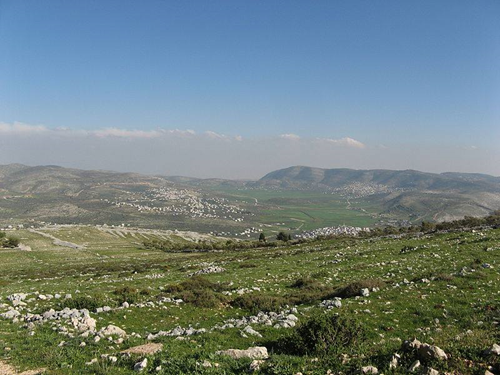6 Jan. Spiritual thirst in Samaria - the home of the 'Good Samaritan'
"The Pharisees heard that Jesus was making and baptising more followers than John, although Jesus himself did not baptise people, but his followers did."
"Jesus knew that the Pharisees had heard about him, so he left Judea and went back to Galilee. But on the way he had to go through the country of Samaria."
"In Samaria, Jesus came to a town called Sychar, which is near the field Jacob gave to his son Joseph. Jacob's well was there. Jesus was tired from his long trip, so he sat down beside the well. It was about twelve o'clock noon."
"When a Samaritan woman came to the well to get some water, Jesus said to her, 'Please give me a drink'. This happened while Jesus's followers were in the town buying some food."
"The woman said, 'I am surprised that you ask me for a drink, since you are a Jewish man and I am a Samaritan woman.' (Jewish people are not friends with Samaritans)."
(John 4:1-9)

We read a lot in the New Testament about Jesus's encounters with the Pharisees. They were the radical thinkers of their day, moving on beyond the written Law of Moses and re-interpreting ‘traditional’ Judaism. They believed not only in the immortality of the soul (the ongoing life of an individual after death), but also in the transmigration of souls (‘re-incarnation’).
They rigorously observed the Jewish religious laws, and had added many additional requirements and restrictions. The only religious fast required by the Jewish law, for example, was on the Day of Atonement (see Leviticus 16:29), but the Pharisees fasted twice a week on Mondays and Thursdays (see Mark 2:18-20).
Jesus criticised the Pharisees for their hypocrisy and for their ability to twist the original intention of the Jewish law (see Matthew 15:1-20).
After John was arrested by Herod Antipas (in 27AD) and the Pharisees began to criticise Jesus and his followers, Jesus went north to Galilee (meaning ‘the circle’ – an apt name for the roughly circular lake and the surrounding hills). The Hebrew name for the lake, Yam Kinneret, means a ‘harp’ – again describing the shape of the lake. The lake is quite small – roughly 13 miles / 21km long by 7 miles / 11km wide and lies in the Jordan Valley about 650 feet / 200 metres below sea level.
En route to Galilee, Jesus stopped at Sychar on the south east slope of Mount Ebal in Samaria. Here he talked with a Samaritan woman at Jacob’s Well – a well dug by the Jewish patriarch Jacob on land he purchased near Shechem and gave to Joseph (see Genesis 33:18-19 & 48:21-22).
Jacob’s Well was typical of the deep wells at numerous settlements in this area. The Samarian Hills are limestone – a permeable rock that allows water to percolate down through the cracks. Consequently, there is little surface water and deep wells are dug to reach the water stored underground.
Jesus had taken the direct route north from Jerusalem to Galilee through Samaria, in contrast to most Jews who took the longer, indirect route east of the River Jordan through Peraea because of their hatred for the Samaritans.
The Samaritans were descendants of the Israelites of the northern kingdom who had intermarried with foreign settlers after the fall of Samaria (the capital of the northern kingdom of Israel) in 722 BC.
As a result of this racial intermarriage, they were no longer considered to be truly Jewish and were hated by most Jews. The Samaritans continued to worship as the Jews did, but took only the first five books of the Old Testament as their spiritual authority.
They built a ‘rival’ temple on Mount Gerizim – which they believed to be the site of the altar where Abraham prepared to offer his son Isaac as a sacrifice (see Genesis 22:1-14) – but this was destroyed by the Hasmonean king John Hyrcanus in 128 BC.
At the time of Jesus’s encounter with the Samaritan woman, Mount Gerizim was still a holy place, and even today, the Samaritan community offers lambs as a ritual sacrifice on the slopes of Mount Gerizim at Passover time.
The site of Jacob’s Well, on the eastern side of Nablus, is now part of a Greek Orthodox monastery. The monastery was built in the 1860s on the site of a late 4th century Byzantine church, which was itself succeeded by a Crusader church. Today, visitors can enter the modern church built in 2007 around what is believed to be the original well, restored by the Crusaders in the 12th century.
The photo (by Someone35) shows Mount Ebal near Nablus.
You can read more about Jesus's encounter with the Samaritan woman @ https://www.thebiblejourney.org/…/jesus-passes-through-sam…/
